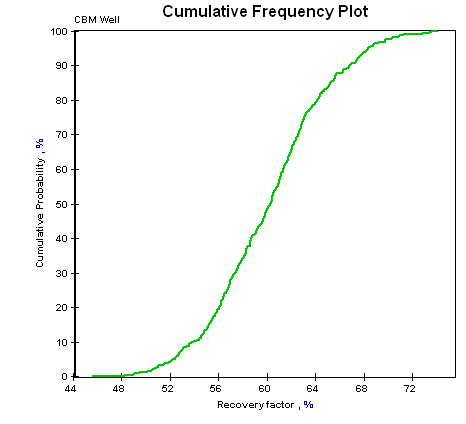
Papers also reflect shifts in attitudes about data analysis (e.g., less formal hypothesis testing, more fitted models via graphical analysis), and in how important application areas are managed (e.g., quality assurance through robust design rather than detailed inspection). This includes an emphasis on new statistical approaches to screening, modeling, pattern characterization, and change detection that take advantage of massive computing capabilities. >Latin Hypercube Sampling (LHS) is a compromise in that it relies on random pairings of stratified samples, thereby incorporating desirable elements. Papers in the journal reflect modern practice. mance simulation applications (e.g., random sam- pling, stratified sampling and Latin Hypercube sam- pling) the sampling based on Solbol quasi-random se. Application of proposed methodology is justified, usually by means of an actual problem in the physical, chemical, or engineering sciences. In addition to the sample points collected by Latin Hypercube Sampling, the optimal solutions found by. As the algorithm progresses, augmented LHS is used to add more points (5D + 1) ( Stein, 1987 ). Its content features papers that describe new statistical techniques, illustrate innovative application of known statistical methods, or review methods, issues, or philosophy in a particular area of statistics or science, when such papers are consistent with the journal's mission. Latin Hypercube Sampling (LHS) ( McKay, Beckman, & Conover, 1979) is used to generate initial sample points (10D + 1, where D is the dimension). By doing so, it is calculated the experiment’s average error which is equal to 4.The mission of Technometrics is to contribute to the development and use of statistical methods in the physical, chemical, and engineering sciences. To obtain an accurate estimate, an experiment of 1000 trials is conducted by using Tidyverse’s purrr library.

#STRATIFIED SAMPLING LATIN HYPERCUBE SAMPLING TRIAL#
However, one trial is not sufficient to gauge the accuracy of this method. Pct_error <- abs((experimental_area / theoretical_area - 1))Īvg_error <- mean(map_dbl(n_points_avg, calculate_pct_error)) Proportion_inside % filter(inside_circle = TRUE) %>% nrow()Įxperimental_area <- 4 * proportion_inside \end\] points_inside % filter(inside_circle = TRUE) %>% nrow() Uniform distribution generate_random_uniform % In short, the purpose of this document is twofold: to benchmark the performance of three sampling strategies and demonstrate their implementation in R. In accordance with the above, a simple task whose accuracy relies upon how well random points cover evenly the parameter space is chosen as a testbed for sampling strategies. In this case, performance is understood as the evenly coverage of the parameter space. sampling Latin hypercube sampling (LHS), a stratified-random procedure. On the contrary, there are many different sampling strategies such as random sampling, stratified sampling, Taguchi method or latin hypercube sampling (Hekimoglu and Barlas 2010), whose performance varies depending on the number of samples. Sampling methods for uncertainty analysis Simple random sampling Simple random. Nevertheless, there is no unique sampling strategy. This can be problematic when using MCRS where many thousands or even tens of thousands of model runs are required to adequately sample the entire parameter space. In doing so, the entire input space with a reasonable sample size is covered and all plausible scenarios are evaluated. large samples without intervention is inhibited.

In System Dynamics, once parameters’ ranges have been determined, random samples from this parameter space are generated which then will be inputs for the System Dynamics model. This method is performed by means of computer algorithms that employ, in an essential way, the generation of random numbers (Shonkwiler and Mendivil 2009). Monte Carlo simulation is a widely-used method for investigating uncertainties in a probabilistic way. On the other hand, parameters significantly affecting output behavior should be chosen as candidates for additional data collection (Sterman 2000). Modelers may spend much time on estimation of possibly unimportant model parameters. Furthermore, sensitivity analysis “also helps to develop intuition about model structure and it guides the data collection efforts” (Sterman 2000). Hence, sensitivity analysis is used to estimate the effect of such uncertainty on model’s output. In System Dynamics, parameters are the representation of exogenous forces that affect the behaviour of a system and are often subject to uncertainty (Hekimoglu & Barlas).


 0 kommentar(er)
0 kommentar(er)
